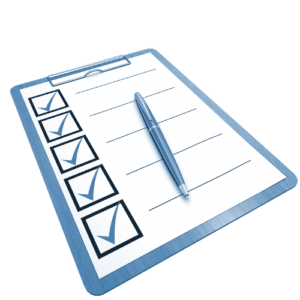The quality policy is a written document by a company to maintain high standards for its products or services. It outlines the company’s approach to ensuring customer satisfaction, compliance with regulations, and continuous improvement efforts.
The quality policy is a foundational element of ISO 9001, a globally recognized standard for quality management systems. It serves as the guiding principle for organizations seeking ISO 9001 certification, demonstrating their dedication to meeting customer requirements, complying with regulations, and continually improving processes.
Quality Policy
The quality policy is where the company has stated its promise. The promise to strive for consistent quality and constant improvement. The quality policy is a short document created by the executive management team.
It displays exactly what quality means to their company specifically. The purpose of their product or service and the strategic direction they are planning to take to achieve these goals.
You must show this document to all employees so all are aware and the company is aligned with their objectives. The document is also made public to be accessed by customers and investors for reference and reassurance.
In short, a quality policy describes your business, what it offers, and your commitment to delivering the highest quality product. Customer requirements are accounted for in the quality policy. Quality objectives are the goals linked to meeting customer requirements. These objectives are within the quality policy statements.
Quality Objectives
A quality objective is a set of goals for the value of the product, and service provided and the production process can strive for. Quality objectives outline the key processes of the company’s quality assurance policy. Businesses use them to focus the efforts of the employees to work toward constant improvement.
The quality objectives created by your business should be created using the SMART principle. Meaning each goal is specific, measurable, achievable, realistic, and time-based. While also being relevant to all people within the organization regardless of their department.
Occasionally people call quality objectives, key performance indicators (KPI). Each goal stems from some aspect of the product or process such as durability, stability, or safety objectives which are the aims to meet.
Making sure that each objective is communicated properly to those involved is a key part of beginning this process. Each individual should understand their part in reaching the goal, and how to remain compliant with the set standards while doing so.
Key Quality Objectives for Organizational Excellence
- Ensure Customer Satisfaction: Strive to meet and exceed customer expectations, providing excellent service and quality products to ensure their satisfaction.
- Enhance Operational Efficiency: Continuously seek ways to improve processes, reduce waste, and maximize resources to increase productivity and quality.
- Adhere to Standards and Regulations: Maintain compliance with industry standards, regulations, and ISO requirements to uphold quality and earn the trust of stakeholders.
- Promote Professional Development: Invest in ongoing training and skill development opportunities to empower employees to excel in their roles and contribute to the organization’s success.
- Mitigate Risks: Identify potential risks and implement measures to minimize their impact on product/service quality, customer satisfaction, and the organization’s reputation.
- Encourage Innovation: Foster a culture of innovation where new ideas are welcomed and encouraged, driving continuous improvement and staying ahead of the competition.
- Champion Environmental Responsibility: Act responsibly by minimizing our environmental footprint, conserving resources, and adhering to sustainable practices in our operations.
Quality Manual
The quality manual is a document that holds the intentions for operating the processes within the QMS (quality management system). The quality manual contains any policies that may alter your production. Or that changes your ability to be compliant with the ISO 9001 requirements.

Quality manuals are used to explain the operations of the company’s QMS to those within the company or to those outside, such as vendors or customers. Although there are certain things present in the majority of quality manuals, the contents are completely up to you. Although you are bound to provide evidence each process has been completed. So be sure to maintain that your policies align with your actual business practices. What quality manuals do need to have are at least 4 sections:
- Quality Policy: direction and vision of the company.
- QMS scope: what parts are included and excluded from the quality management system?
- Quality system processes: Key activities (such as purchasing of inputs, process inspections, etc.).
- Management Responsivities: which senior management members are involved with the QMS and their responsibilities.
In essence, the quality manual communicates management’s expectations to employees. In order to demonstrate the process plans to conform with the requirements set by ISO 9001. The manual is used as an aid while designing the quality management processes that will be effective in the organization.
Documented Information
As of the 2015 updated version of ISO 9001, both the terms ‘record’ and ‘documented procedure’ have been excluded. Both terms are now considered as “documented information.”
Documented information can be defined as all the information passing through a business. All information needs to be maintained or controlled that is. Documented information refers to any information that must be organized and accessible. Some examples of documented information could be work instructions, inspection processes, and product labels.
Documented information is a large portion of being eligible to become certified. This information explains the currently running processes of the company. As well as how they plan to improve these processes in the future.
